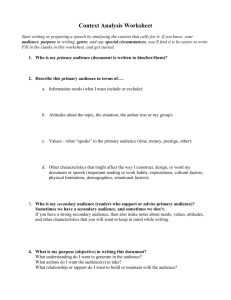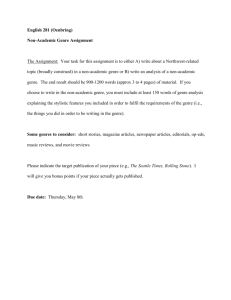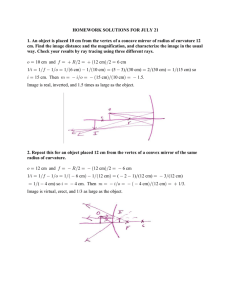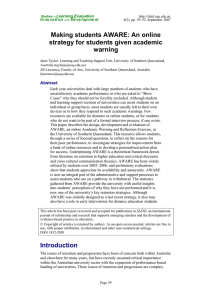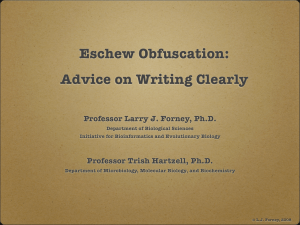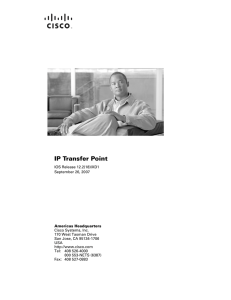Lecture 1
advertisement
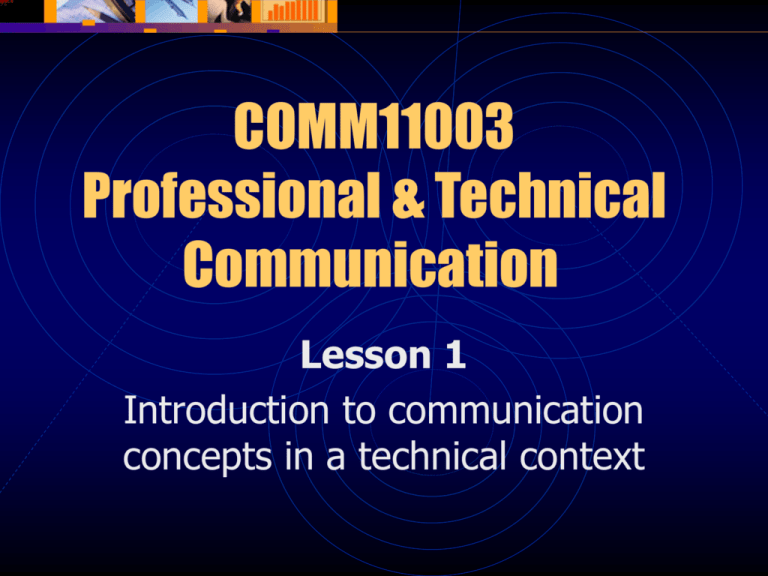
COMM11003 Professional & Technical Communication Lesson 1 Introduction to communication concepts in a technical context Who am I? • Errol Vieth • Contact hours are • Fridays, after this seminar • anytime by appointment • Contact details: • phone 07 4930 9501 • e-mail e.vieth@cqu.edu.au • office is 33/2.23 Course Housekeeping • Two assignments (Ass 1 – Week 6/Ass 2 – Week 12) • Weekly exercises must be done in workshops. • You are expected to read more widely than the text books. • Team Debates in Week 12 for internal students. Course Housekeeping • Refer regularly to the course website at http://webfuse.cqu.edu.au/Courses/2008/T1/ COMM11003/ • You may be grouped with ‘buddies’. You should work together to solve problems, and when approaching tutors for advice. • Contact tutors if you are having difficulties with your buddies. Course Housekeeping • DO NOT PLAGIARISE – for CQU policy, see http://www.cqu.edu.au/documents/unipol/plagi arism.htm • We want to see your best work, not someone else’s. • You will fail if you plagiarise. • Be aware of correct presentation of assignments and referencing. For guidance, see: http://www.cqu.edu.au/referencing What is communication? • Communication is a complex area, with many differing theories. • Put very simply, communication is a ‘transaction’ between two or more individuals. • Sender (idea) > Message (meaning) > Receiver (listen, read) > Response (feedback) • We are dealing with people communicating about the technical. What is technical communication? • Deal with information in a technical context. • Challenge is to adapt information to the level of their audience. • Professions: • • • • Writers/editors Multimedia/web developers Usability engineers and interface designers Proposal writers Why is it relevant? • Good communication means understanding. • Technology is managed in business environments. • Important in an environment where: • Ideas are complex • Misunderstanding is potentially dangerous Types of communication… • • • • • • Oral Visual Written Non-verbal Interpersonal We will cover these at an introductory level in this course. Communication ‘products’ • • • • • Written (report, paper, letter, memo) Online (web page, e-mail) Visual (film, photograph, graph, image) Oral (speech) A product is part of the communication process as a whole. Genre • Genre is a predictable combination of • • • • content, structure, style, and relationship with audience. Defines how we tell a story. Genre in film – western, drama, thriller Genre in literature – poem, novel, play Genre in business and technical communication – technical reports, user manuals, instructions, proposals Social Literacy • Understanding of social practice (‘norms’). • To be socially literate is to understand the rules of the society to which you belong. • ‘What is acceptable?’ • Individual motivated by desire to be accepted by a group. Cultural literacy • Based around established concepts of what is important knowledge within a group. • What you should know in order to function in a cultural environment. • Seen in practice by need to ‘prove yourself’ in order to be accepted. • Individual is motivated by desire to be respected by a group. Why are cultural and social literacy important? • Need to have both social and cultural literacy to communicate effectively across a broad range of people. • Be accepted by and be accepting of different groups. • Technical communicators need to understand, not judge, their audience. Basics of successful communication • Successful communication requires: • • • • • Listening Assertion Conflict resolution Collaborative problem solving Appropriate skill selection (Bolton, 1987) • Also • Organisation • Awareness of audience • Review of material Readings • Textbook: Business Communication: Building Critical Skills • Module 1 – Business Communication, Management, and Success • Module 2 (part) – Audience and the Communication Process p.24 - 25 Exercise 1 This exercise requires you to analyse a user manual using the PAIBOC principles (in your textbook). Your submission should be no longer than half a page, and should be written using full sentences. See your study guide for full details.


